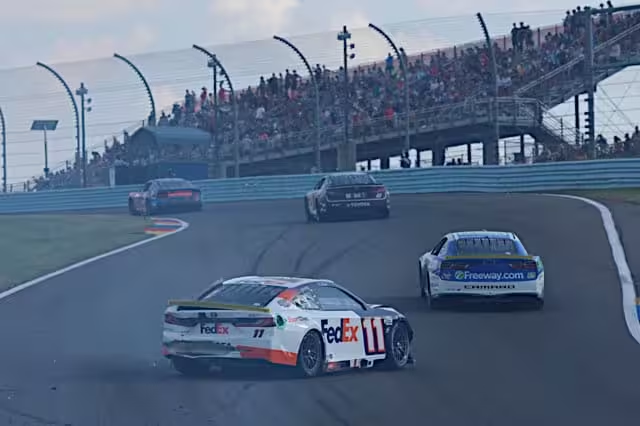The NASCAR Cup Series playoffs are in full swing, and the first two races have created plenty of drama-filled moments.
That was no different at Watkins Glen International, the second race of the postseason. A race that saw non-playoff drivers thrive, title favorites falter and plenty of carnage in the closing laps to go around, before we were treated to a thrilling finish in an otherwise mediocre race.
It didn’t take long for the first major storyline to emerge — half a lap, in fact. And with it, it sparked the reality that the Damaged Vehicle Policy needs to be altered or abolished altogether.
As the field funneled its way through the treacherous Bus Stop, Corey LaJoie slid into Kyle Busch, causing a multi-car crash to erupt behind them.
Playoff drivers such as Denny Hamlin and Christopher Bell were involved, but the primary surprise was Ryan Blaney‘s No. 12 sitting idle on the outside of the Carousel.
Contact with Brad Keselowski that didn’t appear to be harmful, especially for the durability of the Next Gen car, turned out to be terminal as Blaney’s steering column was busted.
As a result, Blaney’s car was unable to turn, and the reigning Cup champion requested NASCAR to tow him back.
NASCAR did exactly that, towing him to the garage and informing the No. 12 team that their race was over because Blaney was unable to drive a damaged car back to pit road.
Understandably, Blaney and company were livid, earning just one point on the day in a time where every point is critical to one’s championship aspirations.
A monster day in the playoff opener at Atlanta Motor Speedway keeps Blaney relatively safe entering the Round of 16 cutoff race at Bristol Motor Speedway, but the primary matter of concern is NASCAR’s damaged vehicle policy rule.
To briefly dive into its origins, the DVP was instituted in 2017 to prevent damaged race cars from driving at dangerously slow speeds or leaving loose debris all over the track. Teams originally had five minutes to repair the car, plus the driver had to meet minimum speed. It currently sits at a seven-minute repair clock.
The intent of the rule itself is fine. Cars that cannot meet minimum speed or that are scattering debris everywhere have no business being on track.
However, the officiating of the rule has not exactly been a bed of roses. Blaney’s case is the most recent example, and the 30-year-old didn’t mince words initially.
“Give us a…
Click Here to Read the Full Original Article at …

